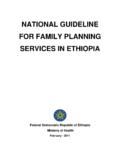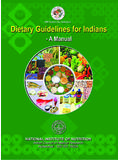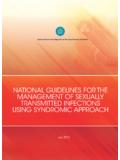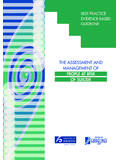Transcription of Multidisciplinary Guidelines for the Care of Late …
1 Multidisciplinary Guidelines for the care of Late Preterm InfantsA Collaborative Project Facilitated ByTABLE OF CONTENTS2 national Perinatal AssociationLong-Term Follow-Up care ..28 Stability ..28 Screening ..29 Safety ..31 Support ..31 References ..32 Acknowledgements ..36 Steering Committee ..36 Collaborative Partners ..37 Endorsing Organizations ..37 Sponsors ..38 Foreward ..3 Introduction ..4In-Hospital Assessment and care ..6 Stability ..6 Screening ..12 Safety ..13 Support ..13 Transition to Outpatient care ..14 Stability ..14 Screening ..17 Safety ..18 Support ..20 Transfer of care ..20 Short-Term Follow-Up care ..21 Stability ..21 Screening ..25 Safety ..26 Support ..27 FORWARD3 national Perinatal AssociationForewardThe evolution of the subspecialty of Neonatology during the past four decades has been a remarkable one, leading to improvements in both survival and quality of outcome that are nearly unsurpassed in modern medicine.
2 Infants with a variety of surgical problems, congenital heart disease, severe lung disease, and congenital malformations, whose survival was once deemed hopeless, now frequently live normal, highly productive lives. Most striking, perhaps, is the outcome of the extremely low birth weight neonate. Infants below 1000 g in the 1970 s rarely survived, yet intact survival is now the norm and developmental outcomes in these patients improve on an annual basis. These results have made it seem as if anything is possible in the NICU, and the management of even the most complex cases at times looks fairly of this amazing success in the NICU population, however, one class of neonates has, perhaps, not received the attention it deserves, namely the late preterm infant.
3 Because the appearance of these infants so closely resembles the full term infant, and because the practice of neonatal medicine has improved so dramatically, the late preterm infant has often been erroneously viewed as merely a slightly smaller version of the term infant, with a similarly modest set of potential problems. The past decade, however, has revealed this assessment to be far from the truth, and the late preterm infant has been found to have a constellation of problems that require as much skill and planning as any complex NICU patient. Issues of respiratory distress, hypoglycemia, hyperbilirubinemia, sepsis, feeding problems and other concerns occur far more frequently in this class of infants than has been previously recognized, and survival itself has more of a problem than was formerly the recognition of the problems of the late preterm infant has been a relatively recent development in Neonatology, few evidence-based approaches to the management of these patients have been published for the various care providers who interact with them.
4 With the production of Multidisciplinary Guidelines for the care of Late Preterm Infants, the national Perinatal Association, in collaboration with many expert individuals and organizations, has performed a long overdue service for caregivers that will prove invaluable to physicians, midwives, nurses, ancillary members of the healthcare team, and, most importantly, the parents of late preterm infants. The methodical approach to the evaluation and management of these neonates, thoroughly supported by up-to-date references, will serve as an ideal road map to improve the outcomes for these infants. I would urge all neonatal providers to carefully read this manual and adopt these carefully considered and clearly outlined strategic approaches to the care of the late preterm R.
5 Spitzer, MDSenior Vice President for Research, Education, and QualityMEDNAX, Inc. / Pediatrix Medical Group/ American AnesthesiologyINTRODUCTION4 national Perinatal AssociationMultidisciplinary Guidelines for the care of Late Preterm Infants Of the 500,000 premature babies born each year in the United States, nearly 75% - or 375,000 - of them are born at 34 0/7 through 36 6/7 weeks of gestational age (GA). These infants are referred to as late preterm infants (LPI) by many who publish research and commentaries about their care , including the consensus panel at the Eunice Kennedy Shriver national Institute of Child Health and Human Development (NICHD).1 Late preterm infants are physiologically and metabolically immature at the time of birth, often lacking the self-regulatory ability to respond appropriately to the extra-uterine environment.
6 Despite their appearance as small but normal babies, LPIs have higher rates of morbidity and mortality than their term counterparts, not only during birth hospitalization, but also throughout the first year after birth and some hospitals, LPIs account for up to 20% of admissions to the NICU, and LPIs are more likely to be re-hospitalized within the first 2 weeks of , 4, 5 The morbidity rate approximately doubles for every week below 38 weeks gestational age that a baby is born (38 weeks: ; 37 weeks: ; 36 weeks: ; 35 weeks: 25%; 34 weeks: ).6 Because of these inherent risks, LPIs require increased surveillance and monitoring of the mother-infant dyad to direct their healthcare needs. The level and intensity of care provided should be based on ongoing assessment of the infant s physiological status and availability of services and personnel within the birthing facility, so that any needed interventions can occur quickly to prevent permanent consequences.
7 With appropriate awareness of potential risks, the care of many LPIs can be managed in the postpartum setting, and the Multidisciplinary Guidelines for the care of Late Preterm Infants are focused on these infants. However, some infants may require transfer to a higher level of care for suitable management and monitoring. A Multidisciplinary approach to caring for the LPI is recommended. care should be implemented and coordinated by clinicians within their scope of practice and should be family-centered, developmentally supportive, and within the context of the family s culture and preferences. Communication should occur and education should be provided in ways that are appropriate for individual family needs, including families with limited or no English proficiency or health literacy.
8 care standards should always be of the highest quality but may require different methods of Perinatal AssociationDevelopment of the Multidisciplinary Guidelines for the care of Late Preterm Infants In response to increasing national awareness of the problems resulting from premature birth, discussions have been held across the nation among healthcare providers and premature infant advocates to explore the many issues surrounding prematurity and the care of preterm infants. During these discussions, one recurring topic has been the growing concern about a category of premature infants known as late preterm infants. While several organization- and hospital-based Guidelines are available for the care of this special population of infants, there is no evidence-based uniformity among them.
9 In addition, while evidence for both short- and long-term consequences of late preterm birth is mounting, most existing Guidelines focus on the in-hospital experience with little or no guidance for short- or long-term 2010, the national Perinatal Association hosted a Summit, entitled Multidisciplinary Guidelines for the care of Late Preterm Infants, to explore ways to address this need. The Summit was attended by 29 Multidisciplinary experts representing 20 different organizations involved in the care of late preterm infants. During this day-long working meeting, the participants divided into five topic-based groups to review current Guidelines in order to determine where consensus already existed, recognize differences in practice, identify gaps with no Guidelines available, and establish a course of action to address the results.
10 At the end of the day, there was unanimous agreement on the need for synthesizing the existing Guidelines into a Multidisciplinary , consensus, and evidence-based set of Guidelines to increase uniformity of care for late preterm infants. A Steering Committee continued the work begun during the Summit. After a draft of the Guidelines was completed, each participant of the original Summit had the opportunity to review the document. Because these valuable suggestions and contributions were incorporated, the Guidelines are truly Multidisciplinary . Use of the latest references relevant for each recommendation helped ensure that the Guidelines are evidenced-based. For ease of use, the Guidelines are divided into four sections: 1) In-Hospital Assessment and care ; 2) Transition to Out-Patient care ; 3) Short-Term Follow-Up care ; and 4) Long-Term Follow-Up care .








